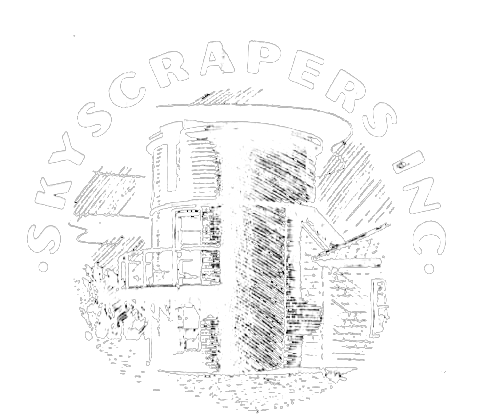
AstroAssembly 2020
The event will run from 1PM to 6PM and focus on the topic of Astrophotography.
Our confirmed speakers are: Dr. Travis Rector, an astronomer at the University of Alaska Anchorage, who writes books on astronomical images for public outreach (he co-wrote Coloring the Universe with Kim Arcand); Adam Block, an astrophotographer from University of Arizona Mount Lemmon SkyCenter, runs an astrophotography/amateur observing institute; and Babak Tafreshi who photographs the night sky and terrestrial nighttime scenes for National Geographic.
Breaks and time to gather will be built into the schedule. Additional information will be posted at www.theSkyscrapers.org/astroassembly2020 and Night Sky Network.
Due to the fact that AstroAssembly is our sole annual fundraiser, we are asking participants to make a donation of $10 or more to the society when registering. Registration is available online at the Skyscrapers website using PayPal or by check. The Zoom link will be sent to all those who have registered for the event.
Saturday Program
Welcome & Introduction
Astrophotography contest voting begins. Submit your photo before Friday, October 2 at 12:00 EDT.
The World at Night
Babak Tafreshi
Babak Tafreshi spent the past two decades photographing surreal scenes of the night sky in all continents, an adventurous journey to the wonders of Earth under the stars. The work documents the last remaining starry skies on the planet to increase public awareness on values of natural night environment for all species. Together with his international group of 40 other dedicated nightscape photographers in The World at Night project, they also produce images. Many are classic single-exposure photographs that represent fundamentals of practical astronomy and are used world-wide by educators, science journalists and communicators. In his recently released book, The World at Night, the work of the entire group is presented with behind-the-scene stories and information that connects the Earth and sky.
Babak A. Tafreshi is a photojournalist and science communicator. The National Geographic night sky photographer, merging art and science, he is also the founder and director of The World At Night program, a board member of the Astronomers Without Borders organization, a contributing photographer to Sky & Telescope magazine, and the European Southern Observatory. Born in 1978 in Tehran, Babak lives in the Boston area, but he is often on the move and could be anywhere, from the heart of the Sahara to the Himalayas or Antarctica. He received the 2009 Lennart Nilsson Award, the world’s most recognized award at the time for scientific imaging, for his global contribution to night sky photography. www.babaktafreshi.com @babaktafreshi
Interpreting Astronomical Images: The Choices and Aesthetics That Go Into Making Images
Adam Block
Adam developed the public observing programs at Kitt Peak National Observatory (1996-2005). Later he founded the Mount Lemmon SkyCenter (2007) at the University of Arizona, which uses 24-inch and 32-inch telescopes for public outreach. He currently continues to work in the Department of Astronomy at the University of Arizona.
Adam’s images are used as references by amateurs and professional researchers alike. The Space Telescope Science Institute, Chandra X-Ray Observatory, Spitzer, and many observatories around the world have used his images for various purposes. The images have also appeared in Nature, Time, and National Geographic magazines, and other popular astronomy literature. Some of his work has permeated into worldwide popular culture, being featured as cover art for Dance/Electronica musical artist Paul van Dyk, and sold on high-quality silk scarves in Europe. He has discovered asteroids, a supernova, and a galactic star stream. In his off-time, Adam is a competitive Table Tennis player.
To follow Adam and see his images visit www.adamblockphotos.com.
The Process of Choosing What and How to Image
Travis Rector
Professional observatories regularly release images to share recent scientific discoveries, demonstrate new technologies, and share the wonders of space. But how are these images made? Do they accurately show what these objects really look like? Are the colors real? Why do some astronomy images dazzle while others leave us flat? Astronomy has a rich tradition of using color photography and imaging, for visualization in research as well as for sharing scientific discoveries in formal and informal education settings (i.e., for "public outreach.") In the modern era, astronomical research has benefitted tremendously from electronic cameras that allow data and images to be generated and analyzed in a purely digital form with a level of precision not previously possible. Advances in image-processing software have also enabled color-composite images to be made in ways much more complex than with darkroom techniques, not only at optical wavelengths but across the electromagnetic spectrum. And the internet has made it possible to rapidly disseminate these images to eager audiences. Alongside these technological advances, there have been gains in understanding in how to make images that are scientifically illustrative as well as aesthetically pleasing. In my talk I will discuss the techniques behind making color-composite images as well as examine the factors we consider when doing so, whether for data visualization or for public release.
Dr. Travis A. Rector is a professor of astrophysics at the University of Alaska Anchorage. He also makes many of the color images released by Kitt Peak National Observatory, Cerro Tololo Inter-American Observatory, and the Gemini Telescopes. He is also a co-author of the book Coloring the Universe, a behind-the-scenes look at how images are made at the professional observatories.